🧐Looking for a comprehensive list of bodyweight leg exercises? You’ve come to the right place! In this blog post, we will discuss all the different types of bodyweight leg exercises that you can do to strengthen and develop your legs.
When it comes to leg exercises, there are plenty of options to choose from. You can go to the gym and use all sorts of machines, or you can do bodyweight exercises at home and save your money from expensive gym memberships.
The great thing about bodyweight exercises is that they are very versatile- you can do them anywhere, and they don’t require any equipment.
⚡️Summary
In this article, we’ll cover:
- ✊ 101 Bodyweight leg exercises
- ✊ Targeted muscle groups
- Quads
- Glutes
- Hips
- hamstrings
- calves
- ✊ Advantages of calisthenics leg training
- ✊ & our Favorite calisthenics leg workout
Advantages of calisthenics leg training💯
Having a strong lower body will improve your overall quality of life and athletic performance.
We use our legs in a ton of movement patterns from the simplest of walking and standing to more advanced and complex movements such as squatting and discipline-specific patterns.
Calisthenics offers holistic development of the lower body which is why it’s our favorite approach to boost our lower body performance.
Here’s a summary of what you can get from calisthenics leg training:
- ☑️ Develops bigger muscles – this is not a myth! Bigger legs are possible with bodyweight
- ☑️ Control & awareness – bodyweight movement patterns require staying focused on leg movements
- ☑️ Trains balance – exercises such as pistol squats require stabilization to perform which improves balance
- ☑️ Improves mobility – calisthenics leg exercises develop the muscles through a wide range of motion
- ☑️ Easier on joints – since you’re only using body weight, stress on the joints is more manageable
- ☑️ Balanced muscles – unilateral exercises help promote equal development of both dominant and non-dominant leg
- ☑️ Improves fat loss – general leg training improves overall caloric expenditure making your gains show
- ☑️ Convenient training – No equipment needed. Train anytime, anywhere
A more extensive explanation of leg training and myths debunked in this article: 📍Why You Should Choose Calisthenics for Your Leg Training
☝️Calisthenics Leg myth
There are plenty of fitness myths surrounding calisthenics in general. This is because mainstream media focuses on equipment-based training to help promote gyms and equipment used to improve your fitness level.
Don’t worry. We’re not going to talk smack about weight training and other approaches as they are also effective methods for lower body training.
Let’s just start off by clearing the major capacity of calisthenics leg training.
- YES! Calisthenics can build leg muscle! – 📍Turn Your Legs into Tree Trunks!
- It’s not only for beginners!
If you opt for calisthenics leg training, then you will definitely boost your lower body performance. However, if you’re looking for more specific lower body goals, then we highly recommend opting for a workout that’s SPECIFIC for your goals.🎯
For example, if you want to squat 150kg, then bodyweight training might be sub-optimal for that goal.
However, if you want to improve your relative strength, mobility, and muscle size, then calisthenics can help you in your leg workouts.
✨List of 100 Bodyweight leg exercises
Like calisthenics upper-body exercises, lower-body exercises are generally compound movements.
We have categorized the list of exercises per muscle group emphasized by the exercise. However, there are certain exercises that hit multiple muscle groups such as the squats.
The good, old squats have a heavier emphasis on the quad muscles but also hits the hamstrings, glutes, hips, and calves. We’ve also included a glute-heavy variation of the squat under the glute exercises. A minor adjustment of technique shifts the focus into the posterior chain.
We’ve also categorized each exercise into its general difficulty. While all exercises can accommodate all levels granted that training protocols and parameters are adjusted, 📍scalable exercises can accommodate a wider range of skill levels by adjusting the technique of the specific exercise. This means they can be performed by beginners to advance effectively and efficiently.
👊Bodyweight Quad Exercises
Foundational movements
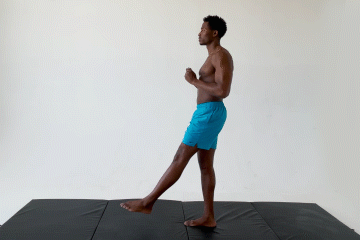
Weighted Pistol Squat
- Regular Squats – Beginner
- Kneeling quad extension – Scalable
- Sissy squats – Advanced
- Bulgarian Split-squat – Intermediate
- Lunges- Beginner
- Shrimp squat – Intermediate
- Close squat – Intermediate
- Wide squat – Intermediate
- Lunge complex – Intermediate
- Wall sits – Beginner
- Alternating wall sit – Intermediate
- Single-leg wall sit- Advanced
- Deep squat – Intermediate
- Hindu squats – Intermediate
- Pistol squats- Advanced
- Skater squat – Intermediate
- Step-ups – Scalable
- Cossack squat – Intermediate
- Bosu ball squat – Intermediate
- Curtsy squat- Advanced
- Wall squat descent- Beginner
- Reverse lunges- Beginner
- Walking lunges- Beginner
- Adductor bridge – Scalable
- Straddle leg lifts – Scalable
- Pike leg lifts – Scalable
👊Explosive Quad Exercises
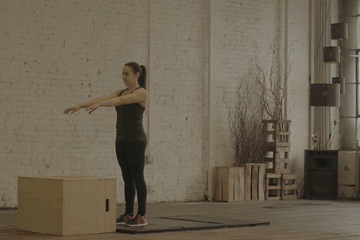
Box jumps
- Jump squats – Scalable
- Tuck jump squats – Scalable
- Jumping lunges – Scalable
- Jumping pistol squat
- Long jump – Scalable
- High jump- Advanced
- Box jump – Scalable
- Single-leg box jump- Advanced
- Kneel to squat jump – Intermediate
- Seated explosive pistol squats
- Plyo lunge complex – Intermediate
- Lunge pulse – Beginner
- Lunge skips – Beginner
- Candlestick to box jump – Intermediate
- Candlestick to tuck jump – Intermediate
👊Bodyweight Glute & Hip Exercises
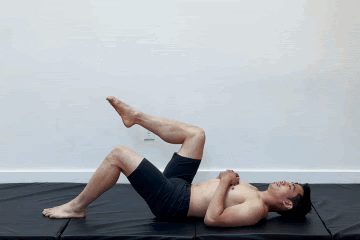
Glute-ham bridge
- Glute-ham bridge – Beginner
- Single-leg glute-ham bridge
- Elevated glute-ham bridge
- Elevated single-leg glute-ham bridge
- Hip thrust – Beginner
- Hip-thrust march
- Single-leg hip thrust
- Glute-dominant step-up
- Glute-dominant lunge
- Bear squat
- Donkey lifts
- Hip drive – Beginner
- Frog glute-ham bridge
- Lunge kick back
- Reversehyper extension
- Single-leg reversehyper extension
- Bird dog
- Back extension
- Fire hydrant
- Side-lying leg lifts
- Quadruped rainbow
- Crossover kick back
- Figure four lifts
- Figure four glide
- Side balance rainbow
👊Bodyweight Hamstring Exercises
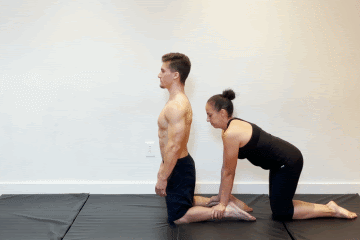
Nordic Curls
- Nordic curls
- Glute-ham hinge
- Glute-ham hybrid
- Hamstring curl
- Single-leg hamstring curl
- Single-leg deadlift
- Stability ball hamstring curl
- Hanging leg curl
- Single-leg hanging leg curl
- Knee flexion hamstring curl
👊Bodyweight Calf Exercises
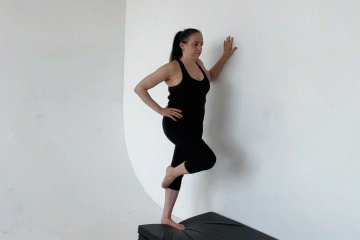
Supported Elevated Single Leg Calf Raises
- Calf raises
- Single-leg calf raises
- Elevated calf raises
- Elevated single-leg calf raises
- Bent-leg calf raises
- Walking calf raises
- Calf raise hold
- Deep squat calf raises
- Donkey calf raises
- Explosive calf raises
- Jumping calf raises
👊Bodyweight Cardio Leg Exercises
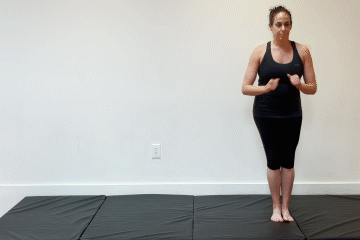
Side shuffle with Squat
- Hill sprint
- Sprint
- Shuffle
- Jumping legs apart & together
- Squat touch
- Regular skips
- Jumping mini splits
- Up & down stairs
- Toe tap
- High knee
- Skips
- Candlestick straight jump
- Ski jump
- Jumping jacks
💥Our Favorite Bodyweight Leg Exercises
As you can see, there’s a plethory of calisthenics leg exercises. Each has its own benefits and purpose. While it can be overwhelming to choose among them, it’s best to focus on the exercises that trains for YOUR SPECIFIC GOALS and WHAT YOU ENJOY.
For general strength, muscle, & mobility development, here are our top exercises since they hit all the general goals we want to achieve.💯
- 🏆Bodyweight squats
- 🏆Pistol squat
- 🏆Kneeling quad extension
- 🏆Nordic curl
- 🏆Calf raises
- 🏆ill Sprints
Focusing on these bodyweight leg exercises can already produce a tremendous amount of lower body progress. However, you can still incorporate the exercises on our list.
Calisthenics Leg Workout🦵
Using the exercises above, we’ve prepared a solid calisthenics leg workout to already get you going on your training. These exercises are very much scalable as well so it can already accommodate all training levels.
✅Bodyweights or Pistol squats – 4 sets of 5 – 12 reps; 1 – 3 minute rest
✅Kneeling Quad Extensions – 4 sets of 4 – 10 reps; 1 – 2 minute rest
✅Nordic Curls – 4 sets of 4 – 10 reps ; 1 – 2 minute rest
✅Elevated single-leg calf raises – 3 sets of failure; 1 – 2 minute rest
Like we’ve said before, each exercise can accommodate different goals. So if you’re interested for other goals to develop the lower body, check out this article: 📍Ultimate Calisthenics Leg Workouts
🏆Benefits of strong legs
Skipping leg training is NEVER AN OPTION!
Even specialized calisthenics athletes who are focused on upper body skills such as planches and levers train their legs. Although they might not focus on building size, they still train them by improving their strength and mobility.
There are many benefits to having strong legs. Some of these benefits include:👇
- 🥇 Improved physical performance in activities such as running, jumping, and climbing;
- 🥇 Better balance and stability, which can help to prevent falls;
- 🥇 Reduced risk of injuries to the knees, hips, and lower back; and
- 🥇 Improved posture
Let’s break down the focus of each muscle group of the lower body. So you can learn how important lower body training is for performance and everyday movement!
🎯Quads
The quadriceps, or quads, are a group of four large muscles located on the front of the thigh. These muscles are responsible for extending the knee joint and are some of the strongest muscles in the human body. Strong quads can help to improve your overall athletic performance and reduce your risk of injuries. Developing the quads help solidify the knee joints and prevent injuries such as ACL tears.
Quad strength and mobility transfer to other daily movements as well such as walking, running, jumping, and standing.
In upper-body calisthenics skills, quad also plays an important role in some movements such as handstand presses, L-sits, and planche just to name a few.
Other disciplines also benefit from having strong and capable quadriceps such as sprinting, cycling, wresting, and such.
While clearly there are a ton of calisthenics quad exercises to choose from, sticking to the foundational movements and our favorites such as the pistol squats and kneeling quad extension is enough to develop mobility, muscle, and strength for the muscle group.
Here is a more in-depth explanation for our favorite quad exercises:📍10 Most Calisthenics Effective Quad Exercises
🎯Hamstrings
The hamstrings are a group of three muscles located on the back of the thigh. These muscles are responsible for flexing the knee and extending the hip. This means hamstrings play an important role in movements such as squatting, walking, running, jumping, and more.
Hamstring mobility is also crucial for certain calisthenics movements such as handstand presses and handstand entrances.
🎯Glutes
The glutes are a group of three muscles located on the buttocks. These muscles are responsible for extending the hip and stabilizing the pelvis. It’s also one of the favorite leg muscles to workout since the glutes are also known as the butt muscles.
Not only for aesthetics but glutes also facilitate general movement patterns such as walking, jumping, dancing, and other movements.
Strong glutes also correlate to less risk of lower back pain and improved knee health. So if you’re suffering from lower back aches & knee pain, then strengthening your glutes can be a great option to alleviate your suffering.
Built stronger and mobile glutes with this workout:📍 No-need-equipment Glute Workout
🎯Hips
The hips are a ball-and-socket joint that allows for a wide range of motion. The muscles and ligaments around the hip joint work together to stabilize the joint and allow for smooth movement.
Many people neglect this area when training the lower body. However, hips are generally targeted when performing compound leg exercises already such as squats and glute-ham bridges.
The hips are basically an extended part of your core. Energy from many movement patterns transfers to the hips for a more efficient execution of exercises. This is why developing strong hips also translates to a stronger core.
🎯Calves
The calves are a group of two muscles located on the back of the lower leg. These muscles are responsible for plantar flexing the foot and stabilizing the ankle. This means that the calves play an important role in movements such as walking, running, and jumping as well!
Strong and mobile calves are also important for certain calisthenics movements such as pistol squats and single-leg Romanian deadlifts.
While many people think that you don’t need to train the calves since they’re already working with other movements, calf isolation is crucial to building bigger muscles. They are already strong so additional training work is needed.
A common myth is that calisthenics can’t build bigger calves. However, if you use the proper exercises and the right training protocols, bigger calves are possible:📍 How to Grow Bigger Calves with Bodyweight Only
📌Take away
As you can see, there are a lot of important muscles in the legs.
Each muscle group plays an important role in daily movement and calisthenics movements.
While some people think that certain muscles aren’t worth training, we believe that every muscle group is important especially if you want a healthy body that doesn’t have any aches and pains and can move freely as you age.
If you’re unsure where to start in your calisthenics journey, then beginning with an assessment is the best way to move forward. This will also give you a chance to get a personalised training program that’s catered to your current skill level, goals, and lifestyle.
Don’t delay your leg training! Build your legs with bodyweight training through a personalised and adaptive program.
TAKE AN ASSESSMENT NOW!💪
